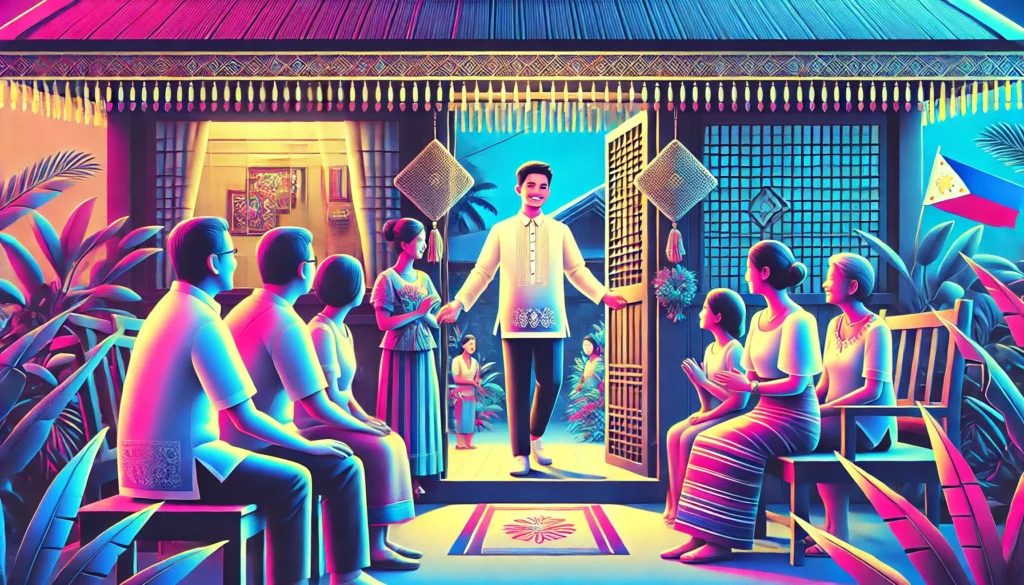The Philippines, an archipelagic nation in Southeast Asia, is renowned for its stunning beaches, diverse ecosystems, and rich cultural heritage. However, one of the country’s most distinctive features is the warmth and hospitality of its people. This characteristic has become a source of national pride and a significant factor in the country’s tourism industry. The following article explores the various aspects of Filipino hospitality, its historical roots, and its impact on modern Filipino society and the country’s international reputation.
Historical Roots of Filipino Hospitality
Pre-colonial influences
Filipino hospitality can be traced back to pre-colonial times, when the islands were composed of various indigenous communities. These early Filipinos practiced “bayanihan,” a concept of communal unity and cooperation. This cultural value laid the foundation for the warm and welcoming attitude that Filipinos are known for today. The practice of offering food and shelter to visitors, even strangers, was common among these early communities and continues to be a hallmark of Filipino culture.
Colonial period impacts
The long history of foreign influences, including Spanish and American colonization, further shaped Filipino hospitality. The fusion of indigenous practices with Western customs created a unique blend of hospitality that combines Asian warmth with Western-style etiquette. This cultural fusion has resulted in a hospitality style that is both familiar and exotic to many international visitors, contributing to the Philippines’ appeal as a tourist destination.
Manifestations of Filipino Hospitality
In daily life
Filipino hospitality is evident in various aspects of daily life. From the way Filipinos greet each other to their treatment of guests, warmth and friendliness are consistently displayed. Here are some common manifestations:
- Offering food to visitors, often insisting even if the guest declines
- Using respectful terms of address, such as “po” and “opo”
- Smiling and maintaining a cheerful demeanor in social interactions
- Going out of their way to assist strangers or tourists
In the tourism industry
The hospitality industry in the Philippines has capitalized on the natural warmth of its people. Hotels, resorts, and other tourist establishments often emphasize the friendly and accommodating nature of their staff as a key selling point. This focus on hospitality has contributed significantly to the growth of the country’s tourism sector.
Economic and Social Impact
Filipino hospitality has had a measurable impact on the country’s economy and social fabric. The table below illustrates some key statistics:
| Aspect | Impact |
|---|---|
| Tourism contribution to GDP (2019) | 12.7% |
| Employment in tourism sector (2019) | 5.7 million jobs |
| Tourist satisfaction rate | 94% (based on DOT survey) |
| Repeat visitors rate | 25% of total arrivals |
These figures demonstrate the tangible benefits of Filipino hospitality on the nation’s economy and its ability to create a positive experience for visitors.
Challenges and Future Perspectives
While Filipino hospitality is generally viewed positively, it also faces challenges in the modern world. The increasing influence of globalization and technology may impact traditional expressions of hospitality. Additionally, there are concerns about the potential exploitation of Filipino workers in the service industry due to their reputation for being accommodating.
Moving forward, the Philippines aims to balance preserving its cultural heritage of hospitality with adapting to changing global norms. Efforts are being made to promote sustainable tourism practices that showcase Filipino warmth while protecting workers’ rights and the country’s natural resources.
Conclusion
Filipino hospitality and warmth remain integral parts of the nation’s identity and a significant contributor to its appeal on the global stage. As the Philippines continues to develop and engage with the international community, its culture of hospitality is likely to evolve while retaining its core essence of warmth and generosity.
Disclaimer: This article aims to provide an overview of Filipino hospitality based on available information and general observations. Cultural practices and their impacts can vary across different regions and individuals within the Philippines. We encourage readers to report any inaccuracies so we can correct them promptly.




